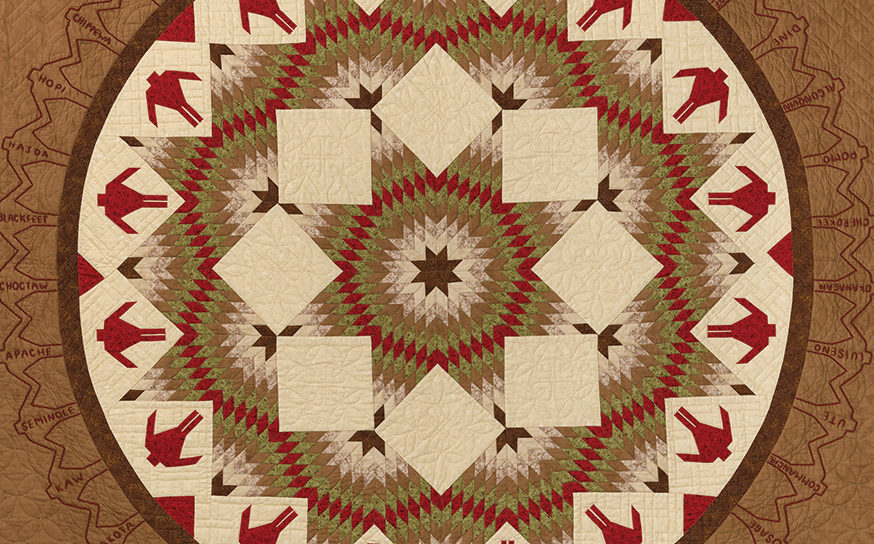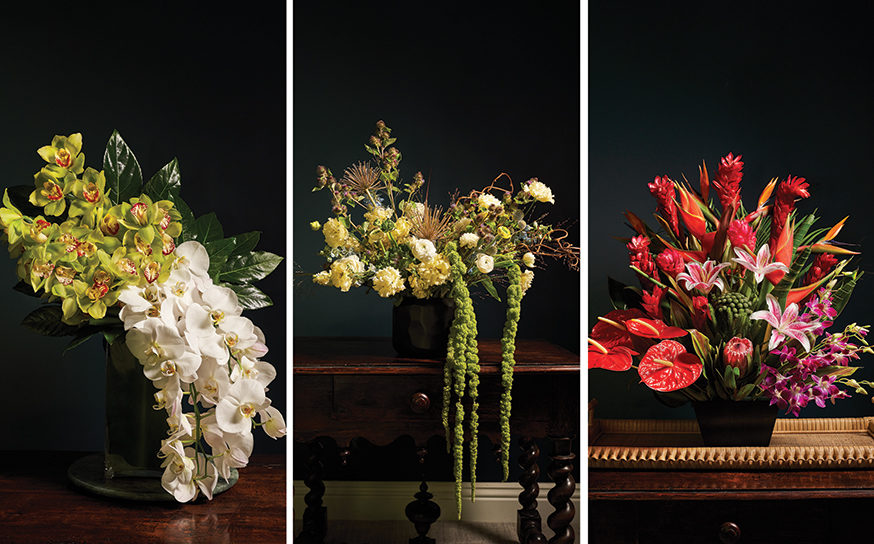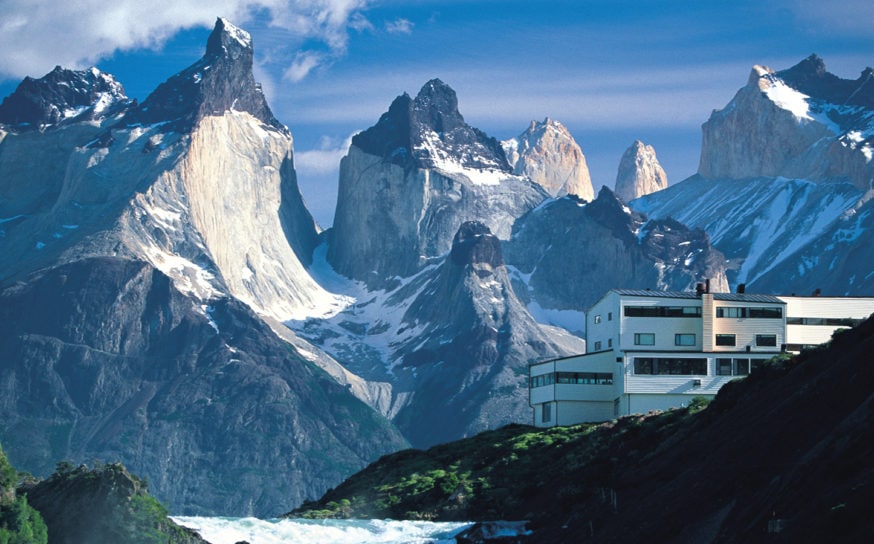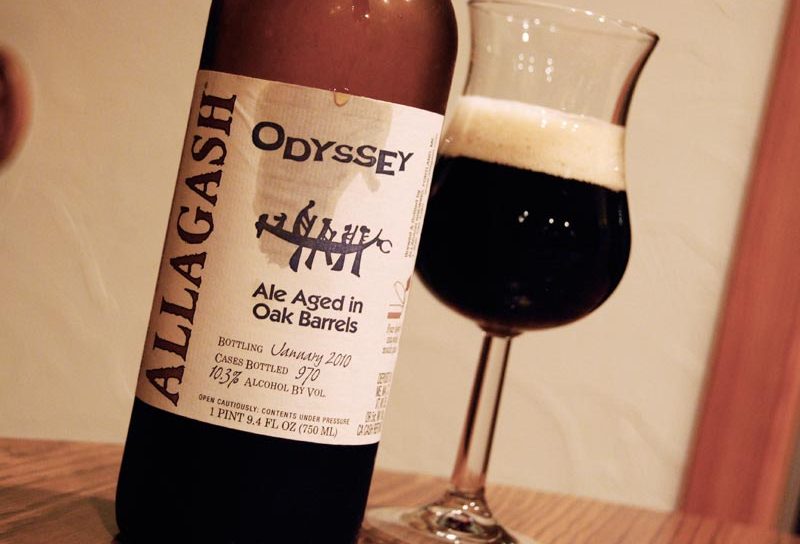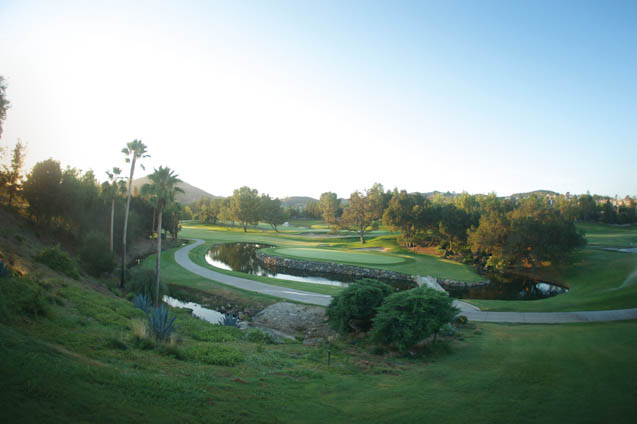
Game On
Now here was a plum assignment. “Pick the best golf holes in the Valley and write about them,” the editors said. “And we’ll pay you a bit to do it, too.” Well, twist my arm, I thought.
-
CategoryUncategorized
-
Written byBart Pachino |
Now here was a plum assignment. “Pick the best golf holes in the Valley and write about them,” the editors said. “And we’ll pay you a bit to do it, too.” Well, twist my arm, I thought.
Not to go all Bill Clinton here, but the hardest part of writing this article began with defining terms like “Valley” and “best.” I decided to exclude courses north of the Sepulveda Pass, and given the name of our magazine, I included only courses within five miles of Ventura Boulevard.
“Best” is a tricky adjective when it comes to golf holes, often confused with “challenging” or “scenic.” Those qualities matter, but the “best” golf holes, in my opinion, are the ones that are well-designed, playable and require a strategic evaluation of risk/reward options. So design was a key criteria in the selection process.
A few disclaimers: I am a long-time member of Braemar Country Club and frequently play there. Before joining, I played regularly at city-owned courses including Woodley Lakes. Now I frequent those courses only to pick up my 15-year-old and his buddies as they take advantage of the youth rate of $7, the single best recreation deal in the Valley. Not ranked in any particular order, here are my seven favorite golf holes.
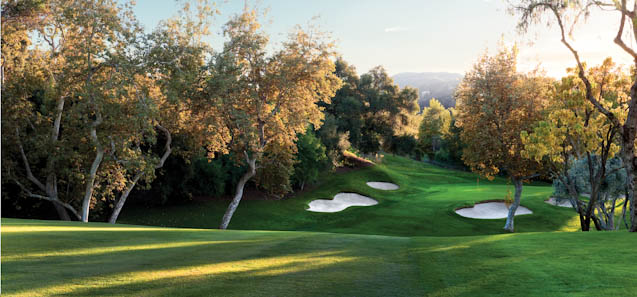
El Caballero Country Club
El Caballero Country Club #14/ par 4 – 385 yards
Generally considered to be in a neck-to-neck race with Lakeside Golf Club as the finest course in the Valley, El Cab was designed by Robert Trent Jones, Sr. in 1957. Picking a favorite hole or two at El Cab is like trying to pick Miss USA during the swimsuit competition.
A true gem, the dogleg right 14th requires a well-placed tee shot of 225 to 250 yards to offer a clear second shot to the green from a plateau high above the green. The tee shot can be shaped in either direction, but avoiding the trees on either side is a must.
If the drive is placed properly, a short to mid-iron is all that is needed to reach a narrow and deep green, but there is a lot to take in while strategizing the approach. The green is guarded by five bunkers and a steep fall off to the right side of the hole. It sits 30 feet below you. And a tall tree, thankfully thinned out periodically, sits on the right side of the fairway only 15 yards from the green.
A well-struck second shot dramatically hangs in the air before sticking to the green. If your definition of a best hole is one that can seem like a routine par one day and a “routine” double bogey the next, then #14 is a great and fair test. Unfortunately, I have had more of the latter.
Woodley Lakes Municipal Golf Course – #10/ par 5 – 456 Yards
For a golf snob, Woodley Lakes is decidedly unmemorable. It is flat, long, treeless and boring—except when other players’ balls or remote-controlled model airplanes are whizzing over your head. The course is wide open off almost every tee. However, Woodley is also a fantastic place to learn the game—as it’s cheap, you have to learn to hit the ball far, and even if you miss the double-wide fairways, you can still find your ball and play on.
The 10th hole is its toughest, measuring 456 yards from the tips and often playing into the prevailing wind. If you are bold and capable enough to cut the dogleg with a 240-yard carry, you are in position to attack the green. Otherwise, the 10th requires three shots to reach the green and is a very difficult par.
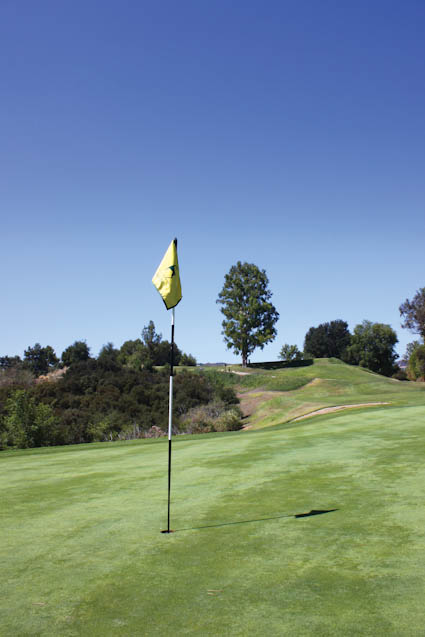
Braemar Country Club #2 masters course/ par 3 – 174 yards
Braemar extensively renovated its former 36-hole facility during 2010 to 2011, developing an entirely new layout of 27 championship holes–including several newly constructed holes–while adding a 10-acre driving range. With minor exceptions, members love the improvements.
A standby from the original East course, the 2nd hole is visually challenging and requires a tee shot to carry over a canyon to a long but narrow, Ridan-shaped green, 50 feet below, flanked by out-of-bounds on each side of the green and big bunkers on three sides. The hole plays anywhere from 185 to 120 yards.
From the back tee, the message from course architect Ted Robinson is clear: Do whatever you can to get on or near the green. The variety of tees and unpredictable wind conditions, not to mention having an audience of fellow golfers watching you from the 3rd tee, make this a test of nerves as much as a test of talent. (One odd plus: If you plunk one into the canyon, you can hike down about 20 feet and find a dozen nearly new balls!)
When the tees are set up front, it’s time to attack for a birdie. Even with all the danger lurking, when you catch your tee shot properly and watch a high arching shot stay in the air forever and then stick the landing on the green, it’s very satisfying.
I tried just that in a recent round in late July. Coming off an opening bogey, the trees on the left saved my pull hook from going out of bounds. Then, from an awkward lie near a tree root (and with my son watching intently), I miraculously pitched in for a birdie–the catalyst for producing an unexpected career-best round–immediately moving this hole higher up my list of favorites.
Lakeside Country Club #5/ par 4 – 451 Yards
Lakeside Golf Club in Toluca Lake is a classic course that oozes Old Hollywood tradition. Designed in 1925 by Max Behr, Lakeside is well-known for its celebrity membership and one of the best 19th holes in the entire golfing world. Out on the course, a traditional, tree-lined layout of 6,539 yards challenges golfers with postage-stamp greens.
The 5th hole is a 451-yard par 4 beauty that initially ascends before descending to a challenging green. After surviving the par 5, nearly 600-yard 4th hole, golfers step up to the 5th for an uphill tee shot and a potentially blind landing. A well-struck drive favors the left side of the fairway with an aggressive line being the edge of a fairway bunker at the top of the hill. Plenty of fairway lies to the right, but a shot pushed too far that way makes the hole even longer.
From the top of the hill, the fairway rolls down some 200 yards to a sloping green that’s narrow from front to back. Even when on in regulation, a sidehill putt can be a killer, and I’ve certainly seen more fives and sixes than pars on this hole.
Weddington Golf and Tennis #2/ par 3 – 130 Yards
Why include a hole from a course that measures 975 yards in the middle of all these country club listings? Because playing Weddington is the perfect antidote to everything that makes golf unappealing to many.
Weddington takes about an hour to play, not five. Everyone walks. Every lie is level. Every green is reachable by air or by ground for almost any caliber of golfer. Everyone ends up with a score less than 70. It costs $11 to play the family-owned course on weekends, and it’s rarely crowded.
The 2nd hole measures 130 yards, and the elevated and narrow green is hard to stick. Miss the green, and chipping to a decent distance requires a skillful shot, too.
When my son and I last played the course in July, we both missed the green, but I made a solid up-and-down for par and squared our match when Dan lipped out a 15-footer for par. (Sorry, Dan). As much as we love our challenging home course at Braemar, there is something very special about the Leave it to Beaver quaintness of Weddington.
Calabasas Country Club #18/ par 5 – 435 yards
Designed by both Robert Trent Jones, Sr. and Robert Trent Jones, Jr., Calabasas Country Club is somewhat of a cross between El Cab and Braemar, with the former’s traditional Trent Jones characteristics and the latter’s quirkier canyon holes.
The most challenging hole at Calabasas Country Club is the 4th—deservedly named for the film Danger Forward. Having never posted even a decent score for this hole in the half dozen times I have played it, well … it’s not making this “best of” list.
Rather, let’s anoint the reconstructed 18th hole, a short (435-yard), risk-reward par 5. The new version is great fun for golfer and spectator (with its new green in full view from the clubhouse snack areas). Hit a good tee shot, and you are faced with the classic decision of whether or not to go for the green in two—and it’s not an easy decision.
The small green is surrounded on almost three sides by water and rimmed by a handsome, new rock wall. Big hitters will have second-shot irons into the green, but even less bold players should be able to compete for a birdie after laying up on the second shot. Many bets will come down to who gets wet with their approach shot. In keeping with the theme of this article, this hole is a “best of” because it is fun and memorable, while incorporating design elements that force the golfer to make strategic decisions and execute them.
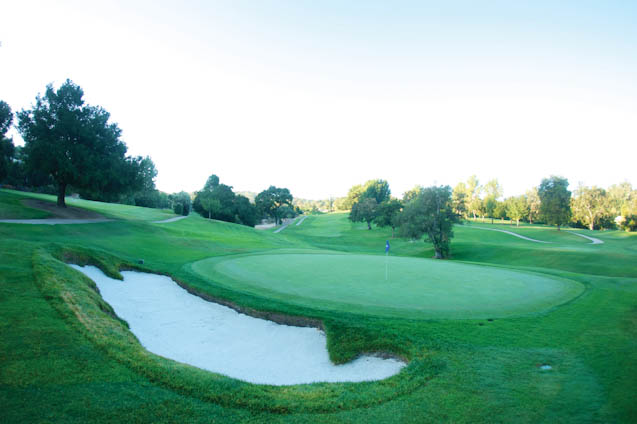
Woodland Hills
Woodland Hills Country Club #16/ par 4 – 469 yards
Designed in 1925 by Billy Bell and having undergone a facelift in 2011, Woodland Hills Country Club sits in a beautiful site in a canyon off Serrania Avenue. While there are nice holes on the front (particularly the 1st hole, a great downhill par 4 with a view), the course’s best holes are the four finishing holes, including #16.
The 16th hole at WHCC is a beast—a 469-yard, par 4 from the back tees, but it plays downhill, with trees lining the left and a nasty ravine (and trees) down the right side. Add a helping wind at my back and some confidence from a par on 15, and I (stupidly) tried to bomb a drive down the right side—but left it in the ravine.
After pitching out, I still had 190 yards to reach the putting surface and surprised myself by knocking my 3-iron to the right edge. I narrowly missed the 30-footer and settled for a tap-in bogey—no shame at all on this difficult and beautiful hole.






